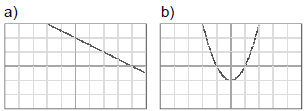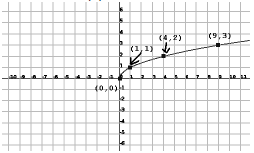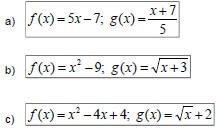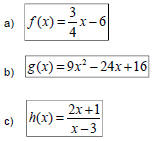Inverse Functions
| Overview • Section 4.1 in the textbook: – Introduction to Inverse Functions – Graphing Inverse Functions – Composition of a Function and Its Inverse – Finding Inverse Functions |
| Introduction to Inverse Functions |
| Inverses & One-to-one Functions • Recall that for each point in a function: – Each x- coordinate is associated with only ONE y-coordinate • Given a function f consisting of a set of points, let f -1 denote the relation that results if we swap the x and y coordinates of each point in f • If f -1 is also a function, then it is called the inverse of f AND f is classified as a one-to- one function – Ex: f = {(0, 0), (1, 5), (-3, 4)}→ f-1 = {(0, 0), (5, 1), (4, -3)} →f is a one-to-one function |
• The domain and range of a function and its inverse are switched: – Ex: f = {(0, 0), (1, 5), (-3, 4)} → f-1 = {(0, 0), (5, 1), (4, -3)} → f (domain) = {-3, 0, 1} & f (range) = {0, 4, 5} → f-1 (domain) = {0, 4, 5} & f-1 (range) = {-3, 0, 1} • To test a graph for an inverse, we use the horizontal line test – If the horizontal line crosses the graph more than once, the graph does not have an inverse  |
| Inverses & One-to-one Functions (Example) Ex 1: Determine whether each function has an inverse. If the function does not have an inverse, state why: a) {(0, 0), (1, 1), (4, 2), (9, 3), (16, 4)} b) {(-2, 4), (-1, 1), (0, 0), (1, 1), (2, 4)} |
Ex 2: Determine which graphs have an inverse:  |
| Graphing Inverse Functions |
| Graphing Inverses • Given the equation of f AND that f is a one-to-one function, we can sketch a graph of f-1 – Swap the x and y coordinates of f • The graph of f and its inverse f-1 is symmetric to the line y = x – If we folded a piece of paper over the line y = x, f and f-1 would lie on top of each other |
| Graphing Inverses (Example) Ex 3: Given the graph of f (x), sketch f -1 (x), the inverse of f (x):  |
| Composition of a Function and Its Inverse |
| Composition of a Function and Its Inverse • Suppose we start off with the value 8 – If we multiply 8 by 2, we get 16 – If we divide 16 by 2, we get back to the original 8 – Works the same way if we divide first and then multiply • Multiplication & division are inverse operations – One undoes the effect of the other • Recall that a composition takes the output of one function as the input to another – In our case, the output of the first “function” was a product which was then put into a division “function” |
| • Given a one-to-one function f, f-1 is the inverse of f if and only if – (f ◦ f -1 )(x) = x • The composition of f and f-1 yields the original value • AND – (f -1 ◦ f) (x) = x • The composition of f -1 and f yields the original value |
| Composition of a Function and Its Inverse (Example) Ex 4: Determine whether the given functions f and g are inverses:  |
| Finding the Inverse of a Function |
| Finding the Inverse of a Function • Rather than a graph of f-1 , we more often than not want the equation of f-1 • Recall that to find f-1 when f consisted of a set of points, we switched the x and y coordinates • Given that f is a one-to-one function, to find f-1 : – Replace f (x) with y – Switch x and y – Solve for y – Substitute f-1 (x) for y • Remember how to check whether two functions are inverses |
Ex 5: Given that the function is one-to-one, find its inverse:  |
| Summary • After studying these slides, you should know how to do the following: – Understand the concept of an inverse function – State whether a function has an inverse by looking at its graph – State the domain and range of a function and its inverse – Graph the inverse of a function – State whether two functions are inverses by using composition – Find the inverse of a function • Additional Practice – See the list of suggested problems for 4.1 • Next lesson – Exponential Functions (Section 4.2) |
| Prev | Next |